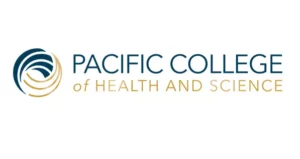Cerebral palsy (CP) refers to a group of permanent disorders of motor conditions resulting in disability related to body movement. CP is not contagious, but is incurable, and usually occurs due to injury to the part of the brain controlling muscle tone and activity. A person with CP may experience disturbance in sensation, perception, communication and thought process. He/she may suffer secondary musculoskeletal problems, have epileptic attacks, or may have increased, reduced or a fluctuating muscle tone. The area of the brain damage determines which parts of the body are affected by CP.
In the US, half a million people have cerebral palsy and around 5,000 new cases among infants are diagnosed annually. This is the most common developmental disability. CP most commonly occurs in the developing stage of the fetus, but can also occur at birth. Research shows the incidence of CP is higher among African Americans.
Risk Factors Associated with Cerebral Palsy
The risk factors which can increase the possibility of CP at birth are:
- Mother’s age less than 20 or more than 40
- Father’s age less than 20
- The child is born premature
- Child is either first-born or fifth-born and after
- Very low birth weight
- German measles infection in the mother during the initial days of her pregnancy.
- An attack on the developing fetal brain by micro-organisms
Are you interested in becoming a certified massage therapist?
Visit the links below to explore our massage therapy programs at a campus near you:
Massage Therapy in Managing Cerebral Palsy
A combination of physiotherapy, occupational therapy, massage therapy, and speech therapy can help people with CP in managing their condition. In a CP patient, the massage technique utilizes slow repetitive movement to work through the pathways of the brain, in turn triggering a favorable response towards lowering muscle tone. Massage therapy along with stretching, heat therapy, and motion exercises can help in providing relief, preventing contractures, enhancing flexibility, reducing pain and improving range of motion. Craniosacral bodywork (involving working with the spine and skull to disengage the reflex) and slow motion exercises gradually help to engage the patient. Work has to be done on the muscle instead of fighting the tone.
Research Findings and Benefits of Massage for CP
The massage therapist working with CP patients should be sensitive towards the patient’s non-verbal signals, facial expressions and breathing techniques. As time passes and the rapport improves, the therapist will learn how to make the patient most comfortable and pick up cues on discomfort or pain.
The Touch Research Institute in Miami has conducted research on children affected by CP subjected to massage therapy. In most cases, the children showed improvement in fine and gross motor functioning and reduced rigidity in overall muscle tone. They exhibited progress in social skills, cognition and facial expressions.
According to the Nursing Times, researchers studying the effects of massage therapy on CP patients have deduced improvement in blood circulation and digestion. The patients showed increase in circulation in the paralyzed limbs, lessening of spasms and muscle tension. The study concluded that passive range of movements stimulate the cranial areas and act as a nurturing touch in increasing flexibility. Thus the overall daily well-being of a CP patient is enhanced. Massage therapy contributes to the quality of life of people with cerebral palsy by improving their physical and mental health.
Featured Posts:

